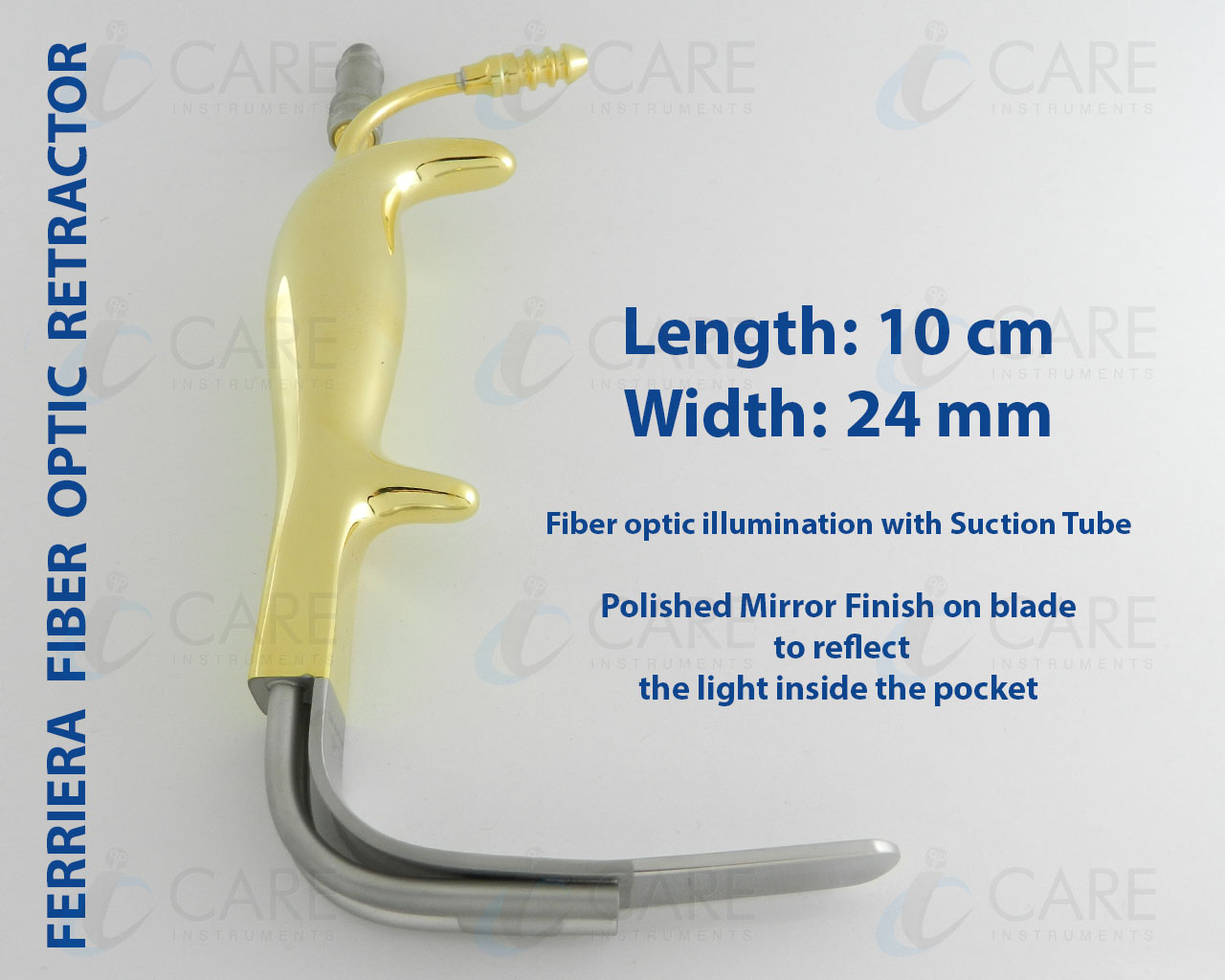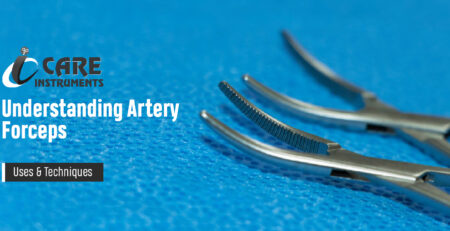How Fiber Optic Retractors Enhance Surgical Precision and Safety
Fiber optic retractors are a type of surgical instrument that has revolutionized the way surgeries are performed. They are used in a wide range of surgical specialties, including neurosurgery, orthopedic surgery, ophthalmic surgery, cardiovascular surgery, and endoscopic surgery. In this blog post, we’ll explore the benefits of using them, how they work, and their different applications in surgery.
 What are Fiber Optic Retractors?
What are Fiber Optic Retractors?
Fiber optic retractors are surgical instruments that use fiber optic technology to provide light to the surgical site. The retractors consist of a handle, a shaft, and a light-emitting tip. The tip of the retractor emits light, providing surgeons with a clear view of the surgical site. The handle of the retractor allows surgeons to control the position of the light-emitting tip, enabling them to maneuver around delicate tissue and organs during surgery.
Benefits of Fiber Optic Retractors:
Fiber optic retractors provide a number of benefits to surgeons, including:
- Enhanced Visibility: Fiber optic retractors provide surgeons with a clear view of the surgical site, making it easier to perform complex procedures with greater accuracy and precision.
- Improved Safety: By providing enhanced visibility, fiber optic retractors reduce the risk of accidental damage to surrounding tissue and organs, improving patient safety during surgery.
- Greater Control: The handle of fiber optic retractors allows surgeons to easily control the position of the light-emitting tip, providing greater control during surgery.
How do Fiber Optic Retractors Work?
Fiber optic retractors work by transmitting light through fiber optic cables. The light is then emitted from the tip of the retractor, providing a clear view of the surgical site. The retractor can be moved around the surgical site, allowing surgeons to easily maneuver around delicate tissue and organs.
 Fiber optic technology allows for the transmission of light over long distances through thin and flexible cables made of glass or plastic fibers. The light is carried along the cable by multiple internal reflections, which keep the light inside the fiber and prevent it from escaping. The tip of the fiber optic retractor contains a bundle of these fibers, which emit the light into the surgical site. The light emitted from the fiber optic retractor is bright and focused, providing excellent illumination of the surgical field.
Fiber optic technology allows for the transmission of light over long distances through thin and flexible cables made of glass or plastic fibers. The light is carried along the cable by multiple internal reflections, which keep the light inside the fiber and prevent it from escaping. The tip of the fiber optic retractor contains a bundle of these fibers, which emit the light into the surgical site. The light emitted from the fiber optic retractor is bright and focused, providing excellent illumination of the surgical field.
The use of fiber optic retractors in surgery has several advantages over traditional surgical retractors. They provide brighter and more focused illumination than traditional retractors, which often require an external light source to be positioned above the surgical site. Fiber optic retractors also allow for more precise and delicate movements, as they are designed to be lightweight and maneuverable. Additionally, fiber optic retractors reduce the risk of accidental burns or damage to surrounding tissue, as they do not produce heat. Overall, the use of fiber optic retractors has greatly improved surgical outcomes and patient safety.
Different Applications of Fiber Optic Retractors
 Fiber optic retractors are used in a wide range of surgical specialties, including:
Fiber optic retractors are used in a wide range of surgical specialties, including:
- Neurosurgery: In neurosurgery, fiber optic retractors are used to provide enhanced visibility during procedures such as brain tumor removal and spinal surgery.
- Orthopedic Surgery: Orthopedic fiber optic retractors are used in orthopedic surgery to provide a clear view of the surgical site during joint replacement procedures.
- Ophthalmic Surgery: In ophthalmic surgery, fiber optic retractors are used to provide a clear view of the surgical site during procedures such as cataract surgery.
- Cardiovascular Surgery: Fiber optic retractors are used in cardiovascular surgery to provide a clear view of the surgical site during procedures such as heart valve replacement.
- Endoscopic Surgery: In endoscopic surgery, fiber optic retractors are used to provide enhanced visibility during procedures such as colonoscopies and bronchoscopies.
Conclusion
Fiber optic retractors are a valuable tool in the modern surgical setting, providing enhanced visibility and greater control during a wide range of procedures. By improving surgical precision and safety, fiber optic retractors have transformed the way surgeries are performed, improving outcomes for patients and providing greater confidence for surgeons.

 What are Fiber Optic Retractors?
What are Fiber Optic Retractors?
Leave a Reply
You must be logged in to post a comment.